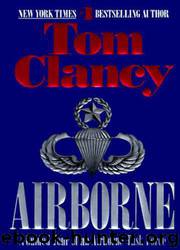06 Airborne by Tom Clancy

Author:Tom Clancy [Clancy, Tom]
Language: eng
Format: epub
Published: 0101-01-01T00:00:00+00:00
From the start, the Hercules had an unusual career within the U.S. military. The first operational employment of the C-130 came in 1957, when President Eisenhower dispatched troops of the 101st Airborne Division to Little Rock, Arkansas. This federal effort to enforce court-ordered school desegregation against the opposition of a defiant state governor started the tradition of the C-130 being used in non-combatant/civil/relief efforts. The Hercules’ major overseas deployment came in 1958 during the Lebanon Crisis, delivering supplies to Marines who landed at Beirut to support a friendly government threatened by civil war. The first combat airborne assault for USAF C-130s came in 1960 in the Congo (now known as Zaire), where they delivered a battalion of French paratroops. The French were headed to the remote town of Stanleyville (now Kisangani) to rescue civilians and diplomats threatened by a local uprising. Following this, when Chinese troops invaded disputed regions on the northern borders of India in 1962, President Kennedy quietly dispatched a squadron of C-130s to help the Indian Army reinforce its remote Himalayan outposts. The Herks flew thousands of troops and tons of supplies into Leh, where a mountain-ringed 5,000-foot /1,524-meter runway of pierced steel plate (PSP) at an altitude of 10,500 feet/3,200 meters was the only link to the outside world. Even more astounding feats were ahead for the C-130, though.
In 1963, the U.S. Navy actually conducted C-130 carrier landing and takeoff trials onboard USS Forrestal (CV-59). The Chief of Naval Operations wanted to know if the big transport could be used to deliver supplies to carriers operating far from friendly bases. The aircraft was a KC-130F tanker on loan from the U.S. Marine Corps, and the Naval aviator in command was Lieutenant (later Admiral) James H. Flatley III, with the assistance of a Lockheed engineering test pilot, Ted Limmer, Jr. At a weight of 85,000 lb/38,555 kg, the aircraft came to a complete stop in a mere 270 feet/82.3 meters, about twice the wing span of the Hercules! This required some fancy flying—the aircraft reversed thrust on the propellers 3 feet/1 meter above the deck. At maximum load, the plane required a takeoff roll of only 745 feet/227 meters of the carrier’s 1,039-foot/316.7-meter flight deck. On one occasion, the plane stopped just opposite the captain’s bridge with “LOOK MA, NO HOOK” painted in big letters on the side of the fuselage. The Navy never followed up on this promising experiment (they bought the Northrop Grumman C-2 Greyhound instead), but the Herk’s unique ability to take off and land on a carrier remains to challenge the imagination of Joint Special Operations planners down in Tampa.
The war in Southeast Asia tested the Hercules under the most difficult combat conditions imaginable. All told C-130s transported about two thirds of all the troops and cargo tonnage moved by air inside South Vietnam. Frequently, the Herks flew through mortar and rocket fire into narrow 2,500-foot strips carved out in the jungle, and when there were no airfields, they delivered cargo by parachute.
Download
This site does not store any files on its server. We only index and link to content provided by other sites. Please contact the content providers to delete copyright contents if any and email us, we'll remove relevant links or contents immediately.
| Anthologies | Short Stories |
The Tidewater Tales by John Barth(12623)
Kathy Andrews Collection by Kathy Andrews(11756)
Tell Tale: Stories by Jeffrey Archer(8995)
This Is How You Lose Her by Junot Diaz(6827)
The Mistress Wife by Lynne Graham(6451)
The Last Wish (The Witcher Book 1) by Andrzej Sapkowski(5418)
Dancing After Hours by Andre Dubus(5257)
The Sympathizer by Viet Thanh Nguyen(4334)
Be in a Treehouse by Pete Nelson(3995)
The Secret Wife by Lynne Graham(3894)
Maps In A Mirror by Orson Scott Card(3860)
Tangled by Emma Chase(3714)
Ficciones by Jorge Luis Borges(3597)
The House on Mango Street by Sandra Cisneros(3424)
Girls Who Bite by Delilah Devlin(3225)
A Knight of the Seven Kingdoms by George R R Martin(3219)
You Lost Him at Hello by Jess McCann(3031)
MatchUp by Lee Child(2859)
Once Upon a Wedding by Kait Nolan(2766)
